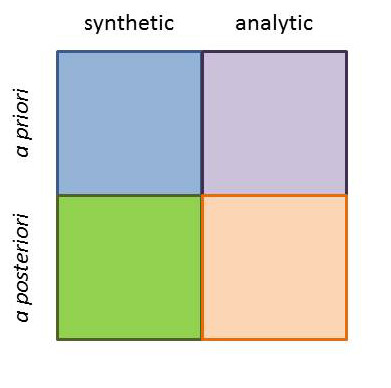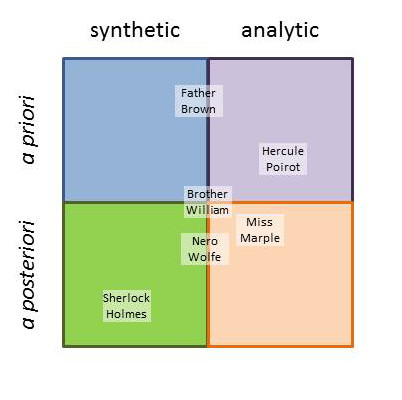It Isn’t Elementary
I suppose that this post grew out of a recent opportunity I had to re-watch the M*A*S*H television series. One particular episode, entitled The Light That Failed, finds the army surgeons and nurses of the 4077th unit suffering a brutal Korean winter and desperately low on supplies. The supply truck soon arrives bearing a cargo more suited for a military unit in the Guam or the Philippines and not mainland Asia. As the troops are left wondering what they can do with mosquito netting, ice cream churns, and swim fins when the temperature is hovering around freezing, someone notices that one of the doctors, B J Hunnicutt, has received a very rare object – a book.
And this is not just any book, but a murder mystery by the famed writer Abigail Potterfield called the Rooster Crowed at Midnight. Either out of the goodness of his heart or out of a desire to end the constant nagging (probably both), B J decides to tear portions of the book out so that it can circulate throughout the camp. As the old saying goes, no good deed goes unpunished, and soon he discovers that the last page of the book, in which all is revealed, is missing. And thus begins the great debate as to who committed the murders, how they did it, and why.
The team comes up with many answers, all of which are first widely embraced as the solution and then scuttled when someone gives a counterexample that pokes a hole in the theory. They eventually place a long distance phone call to the author herself, now residing in Australia, to get the answer. But even this authoritative voice doesn’t quell the skepticism. Shortly after they ring off, Col. Potter, the commanding officer, points out that Abigail Porterfield’s own solution can’t be true. The episode closes with the delivery of the much-needed supplies, and some comic hijinks, but with no satisfactory explanation as to who the culprit was.
I was in middle school when I first saw that episode and it left a lasting impression on me. For many years I carried misconceptions about mystery stories and I wondered why anyone would ever read them. In particular, I held a very skewed idea about deductive reasoning and what can and cannot be determined from the evidence. With the perspective of years (really decades) I am both happy and disappointed to say that I was not alone in my poor understanding of what logic and reason are capable of achieving.
Let’s talk about deductive logic first. The basic idea behind deductive logic is that the conclusion is infallible if the premises are true. It is a strong approach to logic, since it argues from first principles that apply to a broad class or set of objects and, from those, narrows down a conclusion about a specific object. In a pictorial sense, deductive logic can be thought of in terms of Venn diagrams. If we want to conclude something about an object we simply need to know into what categories or classes this object falls and we will be able to exactly conclude something about it by noting where all of the various categories to which it belongs intersect.
Deductive reasoning is, unfortunately, also limited by the fact that we are not born with nor does anyone have the universe’s user manual that spells out in detail what attributes each object has and into what categories they may be grouped. So, the standard objections that are raised in deductive logic fall squarely on disagreements about the truth of one or more premises.
For example, the syllogism
- All men are mammals
- George is a man
- Therefore George is a mammal
is a logically correct deduction, since the conclusion follows from the premises and it is true since the premises are true (or at least we regard them to be true). The syllogism
- All men are mammals
- George is a mammal
- Therefore George is a man
is invalid, even though its premises are true, since it argues from the specific to the general. In contrast, the syllogism
- All white birds are man-eaters
- All swans are white birds
- Therefore all swans are man-eaters
is perfectly valid, since the conclusion follows from the premises, but is not true since neither premise is true (or so I hope!).
All of this should be familiar. But what to make of this ‘deduction’ (B J’s syllogism) made by B J Hunnicutt in the episode:
- Lord Cheevers was murdered in the locked library in Huntley Manor
- Randolf had motive for murdering Lord Cheevers
- Randolf played in Huntley Manor as a child
- Randolf would have known if there were secret passages in Huntley Manor
- Therefore Randolf was the murderer.
Is this really a deduction as he claimed? According to the novel, the first three premises are true. The fourth premise is certainly plausible but is not necessarily true. How then should we feel about the conclusion? What kind of logic is this if it is not deductive? Suppose we knew that Randolf was the murderer (e.g., we caught him in the act). What can we infer about the fourth premise?
Before answering these questions, consider what would happen if we were to modify the argument a bit to simplify the various possibilities. The syllogism (B J’s syllogism revised) now reads
- Lord Cheevers was murdered in the locked library in Huntley Manor
- Randolf had motive for murdering Lord Cheevers
- Randolf played in Huntley Manor as a child
- Randolf knew there was a secret passage from the study to the library
- Randolf was seen entering the empty study just before the murder
- Therefore Randolf was the murderer.
This argument is certainly a stronger one than the first one proffered, but it isn’t really conclusive. But, again, how should we feel about the conclusion? What kind of logic is this?
In both cases, we know that the conclusion is not iron-clad; that it doesn’t necessarily follow from the premises. But just like those fictional characters in M*A*S*H, we are often faced with the need to draw a conclusion from a set of premises that do not completely ‘nail down’ an unequivocal conclusion.
The type of logic that deals with uncertainty falls under the broad descriptions of inductive and abductive reasoning. Inductive reasoning allows us to draw a plausible conclusion ‘B’ from a set of premises ‘A’ without ‘B’ necessarily following from ‘A’. Abductive reasoning allows us to infer the premise ‘A’ based on our knowledge that outcome ‘B’ has occurred.
In the M*A*S*H examples given above, B J’s revised syllogism is an example of inductive reasoning. All the necessary ingredients are there for Randolf to have committed the crime but there is not enough evidence to inescapably conclude that he did. We can infer that Randolf is the killer but we can’t conclude that with certainty.
B J’s original syllogism is a lot more complicated. It involved elements of both inductive and abductive reasoning. If we believe Randolf is guilty, we might then try to establish that there were secret passages in Huntley Manor that connected the locked library to some other room in the mansion. We would then have to also establish, maybe through eyewitness testimony, that Randolf knew of the passages (e.g., an old servant recalls showing it to a young Randolf). Even still, all we would be doing is establishing the premises with more certainty. The conclusion of his guilt would still not necessarily follow. If, on the other hand, we knew that he was guilty, perhaps he was seen by someone looking into the library from outside, we might abductively infer that there was a secret passage and that Randolf knew of its existence.
So here it is, a great irony of life. It’s decades after I first watched an episode of M*A*S*H that turned me off of mystery stories for a long time, and I find myself using that episode as a model for discussing logic and reason. That, I can’t figure out.



